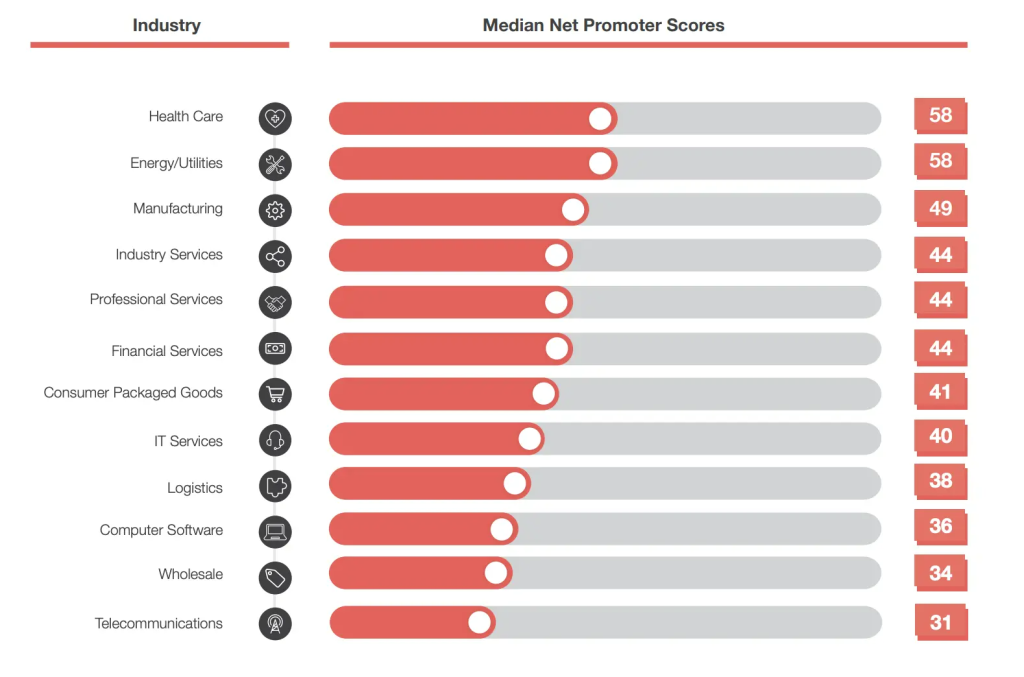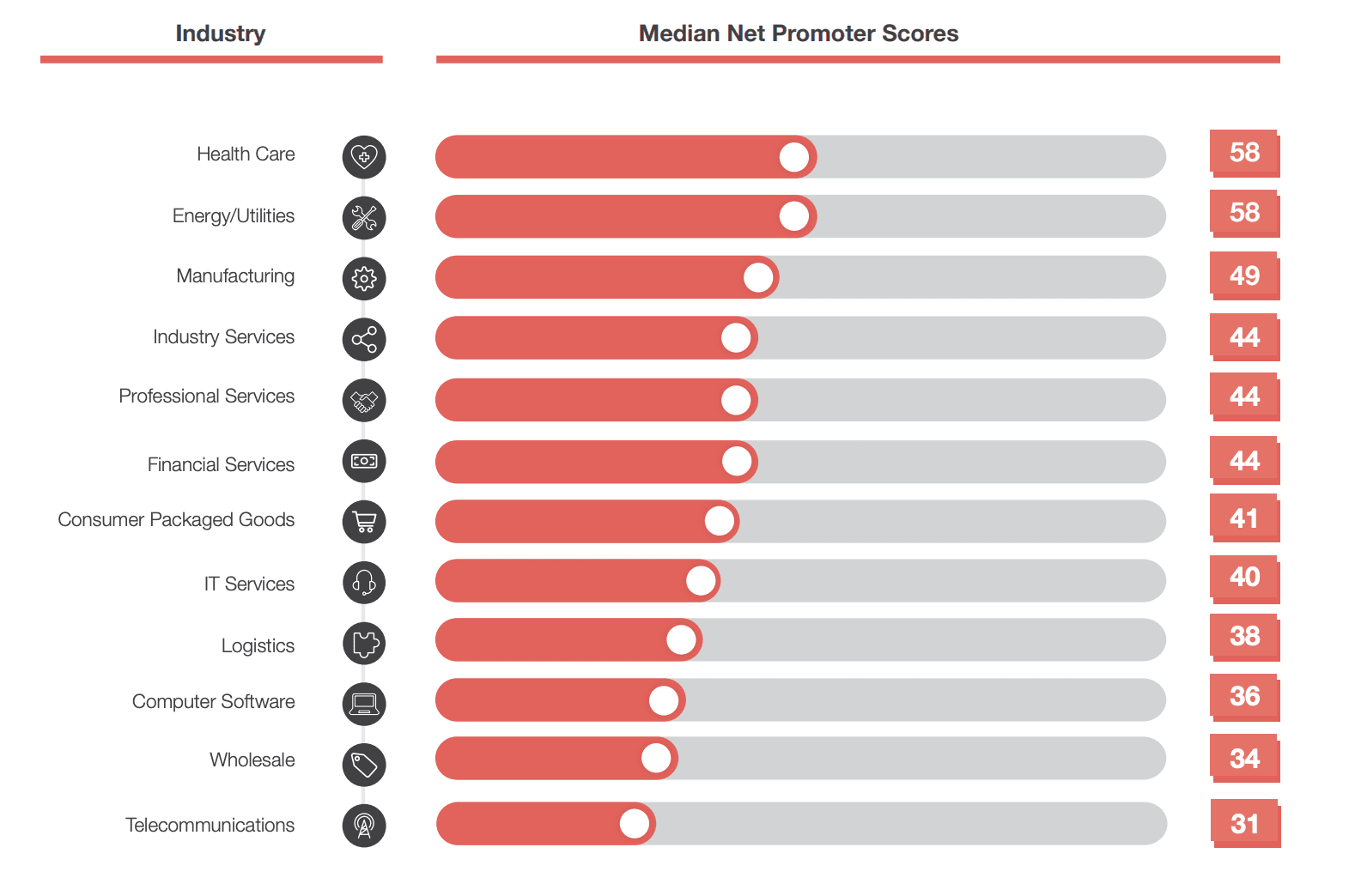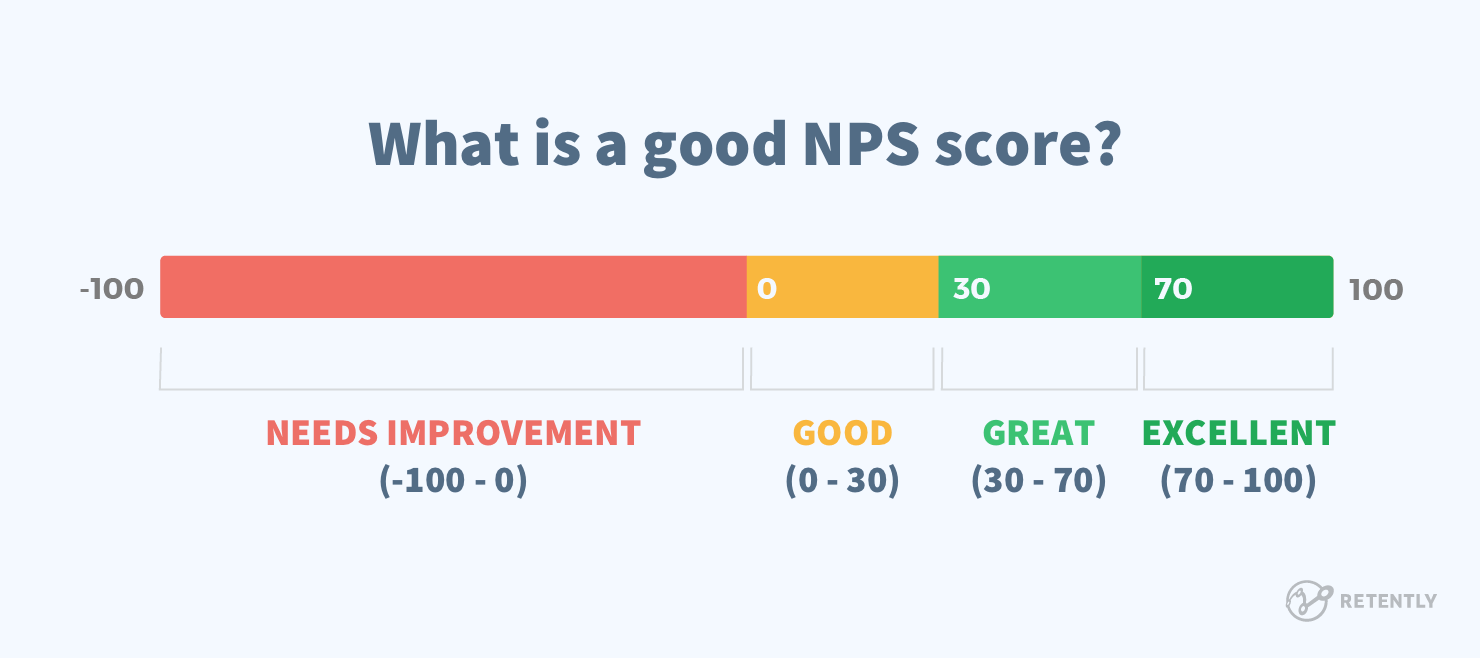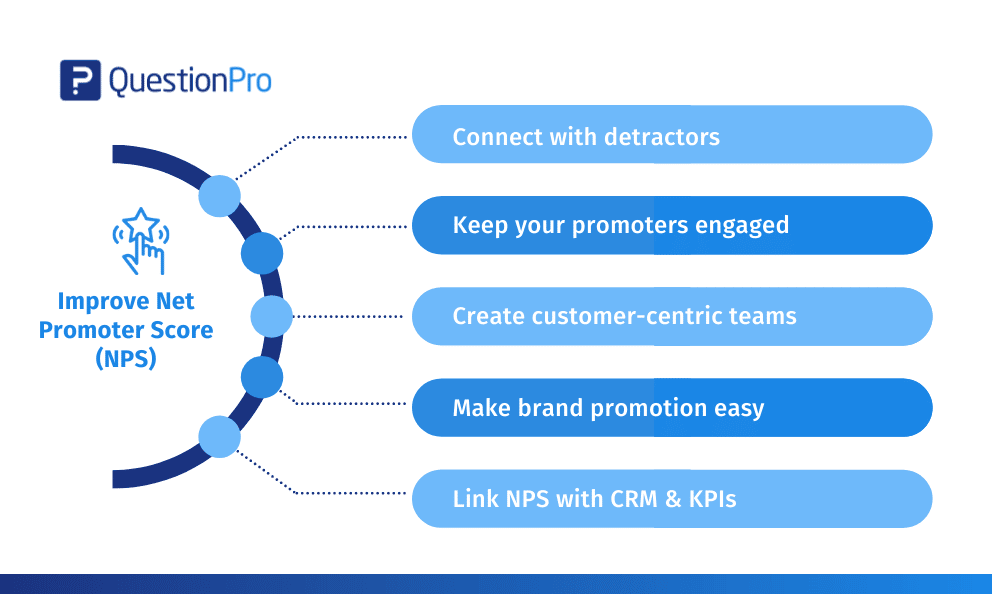What is the average Net Promoter Score of B2B SaaS companies? What are the main strategies to improve it?

The Net Promoter Score (NPS) is a critical metric for B2B SaaS companies, reflecting customer loyalty and satisfaction. It measures the likelihood of customers recommending a product or service, providing valuable insights into business performance. On average, B2B SaaS companies achieve an NPS ranging from 30 to 50, though top performers often exceed this range. Understanding this benchmark is essential for companies aiming to enhance customer experience and drive growth. This article explores the average NPS for B2B SaaS companies and delves into proven strategies to improve it, from optimizing onboarding processes to fostering proactive customer support and leveraging feedback effectively.
- What is the Average Net Promoter Score of B2B SaaS Companies and How to Improve It?
- What is the average NPS score for B2B SaaS company?
- What is a good NPS score improvement?
- Which of the following are strategies for improving your Net Promoter Score?
- How can we improve Net Promoter Score?
- Frequently Asked Questions (FAQ)
What is the Average Net Promoter Score of B2B SaaS Companies and How to Improve It?
What is the Average Net Promoter Score (NPS) for B2B SaaS Companies?
The average Net Promoter Score (NPS) for B2B SaaS companies typically ranges between 30 and 50. This score is considered good in the SaaS industry, as it reflects a balance between customer satisfaction and areas for improvement. However, top-performing companies often achieve scores above 70, showcasing their ability to deliver exceptional customer experiences. NPS is calculated by subtracting the percentage of detractors (unhappy customers) from the percentage of promoters (loyal customers).
Why is NPS Important for B2B SaaS Companies?
NPS is a critical metric for B2B SaaS companies because it measures customer loyalty and predicts business growth. A high NPS indicates that customers are likely to recommend the product, which can lead to increased referrals, higher retention rates, and reduced churn. Additionally, NPS provides actionable insights into customer sentiment, helping companies identify areas for improvement and prioritize customer-centric strategies.
What Are the Main Strategies to Improve NPS in B2B SaaS?
Improving NPS in B2B SaaS requires a focus on customer experience and product quality. Key strategies include:
- Enhancing onboarding processes to ensure customers understand the product’s value quickly.
- Providing exceptional customer support to resolve issues promptly.
- Regularly collecting and acting on customer feedback to address pain points.
- Offering personalized experiences to meet individual customer needs.
- Investing in product development to deliver features that align with customer expectations.
How Does Customer Feedback Influence NPS?
Customer feedback is the backbone of NPS improvement. By actively collecting and analyzing feedback, B2B SaaS companies can identify common pain points and areas where they excel. Implementing changes based on this feedback demonstrates a commitment to customer satisfaction, which can turn detractors into promoters. Tools like surveys, interviews, and feedback forms are essential for gathering actionable insights.
What Role Does Customer Support Play in Boosting NPS?
Customer support is a key driver of NPS in B2B SaaS. Quick and effective resolution of customer issues can significantly improve satisfaction levels. Companies should focus on:
- Reducing response times to customer inquiries.
- Training support teams to handle complex issues.
- Offering multiple support channels (e.g., chat, email, phone).
- Proactively reaching out to customers to address potential problems before they escalate.
| Strategy | Impact on NPS |
|---|---|
| Improving Onboarding | Increases customer understanding and satisfaction |
| Enhancing Customer Support | Boosts loyalty and reduces churn |
| Acting on Feedback | Addresses pain points and improves product quality |
| Personalizing Experiences | Increases customer engagement and satisfaction |
| Investing in Product Development | Aligns product features with customer needs |
What is the average NPS score for B2B SaaS company?

The average Net Promoter Score (NPS) for B2B SaaS companies typically ranges between 30 and 50. This score reflects the likelihood of customers recommending the company's product or service to others. However, the exact NPS can vary depending on factors such as industry, customer satisfaction, and the quality of customer support.
What Factors Influence the NPS of B2B SaaS Companies?
Several factors can influence the NPS of B2B SaaS companies:
- Product Quality: A reliable and user-friendly product is crucial for high NPS scores.
- Customer Support: Responsive and effective support can significantly boost customer satisfaction.
- Onboarding Experience: A smooth onboarding process helps users quickly realize the value of the product.
How Does NPS Compare Across Different SaaS Industries?
NPS scores can vary widely across different SaaS industries:
- Enterprise Software: Typically has a lower NPS due to complex implementations and longer onboarding times.
- CRM Software: Often scores higher due to its direct impact on sales and customer relationships.
- Project Management Tools: These tools usually have moderate NPS scores, depending on ease of use and integration capabilities.
Why Is NPS Important for B2B SaaS Companies?
NPS is a critical metric for B2B SaaS companies for several reasons:
- Customer Loyalty: High NPS scores indicate strong customer loyalty and retention.
- Referral Potential: Satisfied customers are more likely to refer others, driving organic growth.
- Product Improvement: Feedback from NPS surveys can highlight areas for product enhancement.
How Can B2B SaaS Companies Improve Their NPS?
Improving NPS requires a strategic approach:
- Enhance Customer Support: Invest in training and resources to provide exceptional support.
- Regular Updates: Continuously improve the product based on user feedback.
- Engage with Customers: Actively seek and respond to customer feedback to build stronger relationships.
What Are the Challenges in Achieving a High NPS for B2B SaaS?
Achieving a high NPS is not without its challenges:
- Complex Implementations: B2B products often require significant setup and customization.
- Diverse User Needs: Catering to a wide range of user requirements can be difficult.
- Competition: High competition in the SaaS industry can make it challenging to stand out.
What is a good NPS score improvement?

What is a Good NPS Score Improvement?
A good Net Promoter Score (NPS) improvement depends on your starting point and industry benchmarks. Generally, an improvement of 5 to 10 points is considered significant, as it reflects meaningful progress in customer loyalty and satisfaction. For example, moving from an NPS of 30 to 40 indicates a stronger relationship with customers. However, the context matters—industries with traditionally low NPS scores may see smaller improvements as more impactful.
- Understand your baseline: Start by analyzing your current NPS to identify areas for improvement.
- Set realistic goals: Aim for incremental improvements rather than drastic jumps.
- Monitor trends: Track changes over time to ensure sustained progress.
Why is a 5-Point NPS Improvement Significant?
A 5-point NPS improvement is significant because it often reflects tangible changes in customer experience. Even small increases can indicate that your efforts to address customer pain points are working. For instance, improving response times or enhancing product quality can lead to this level of improvement.
- Customer retention: A 5-point increase can reduce churn rates and boost loyalty.
- Competitive edge: It helps you stand out in industries with similar NPS averages.
- Employee morale: Positive feedback from customers can motivate your team.
How to Achieve a 10-Point NPS Improvement
Achieving a 10-point NPS improvement requires a strategic approach. This level of improvement often involves addressing systemic issues, such as improving customer support or refining your product offering. It may also require gathering detailed feedback to identify specific areas for enhancement.
- Analyze feedback: Use customer surveys to pinpoint recurring issues.
- Implement changes: Focus on high-impact areas like service quality or user experience.
- Communicate improvements: Let customers know about the changes you’ve made based on their feedback.
What Factors Influence NPS Score Improvement?
Several factors influence NPS score improvement, including customer experience, product quality, and service delivery. External factors like market trends and competitor actions can also play a role. Understanding these factors helps you prioritize initiatives that will drive the most significant impact.
- Customer experience: Ensure every touchpoint is seamless and positive.
- Product quality: Deliver reliable and high-performing products.
- Service delivery: Provide timely and effective support.
How to Measure the Impact of NPS Score Improvement
Measuring the impact of NPS score improvement involves tracking key metrics like customer retention, repeat purchases, and referral rates. These metrics help you understand how changes in NPS translate into business outcomes. Additionally, comparing your NPS to industry benchmarks provides context for your progress.
- Customer retention: Monitor how many customers continue to do business with you.
- Repeat purchases: Track the frequency of repeat transactions.
- Referral rates: Measure how often customers recommend your brand to others.
Which of the following are strategies for improving your Net Promoter Score?

1. Enhance Customer Experience
Improving the overall customer experience is one of the most effective strategies for boosting your Net Promoter Score (NPS). This involves ensuring that every interaction a customer has with your brand is positive and memorable. Here are some actionable steps:
- Personalize interactions to make customers feel valued.
- Streamline processes to reduce friction and improve satisfaction.
- Train staff to deliver exceptional service consistently.
2. Act on Customer Feedback
Actively listening to and acting on customer feedback is crucial for improving your NPS. Customers appreciate when their opinions lead to tangible changes. Consider the following steps:
- Regularly collect feedback through surveys, reviews, and direct communication.
- Analyze feedback to identify common pain points and areas for improvement.
- Implement changes based on feedback and communicate these updates to customers.
3. Build Stronger Customer Relationships
Fostering stronger relationships with your customers can significantly enhance loyalty and advocacy. This involves creating a sense of connection and trust. Here’s how:
- Engage with customers on social media and other platforms to build rapport.
- Offer loyalty programs or exclusive benefits to reward repeat customers.
- Follow up with customers after purchases to ensure satisfaction and address concerns.
4. Resolve Issues Promptly
Quickly and effectively resolving customer issues can turn detractors into promoters. A responsive support system is key to achieving this. Follow these steps:
- Provide multiple channels for customers to reach support (e.g., chat, email, phone).
- Set clear response time expectations and meet them consistently.
- Empower support teams to resolve issues without unnecessary escalation.
5. Deliver Consistent Value
Ensuring that your product or service consistently delivers value is essential for maintaining a high NPS. Customers need to feel they are getting their money’s worth. Consider these actions:
- Regularly update and improve your offerings based on market trends and customer needs.
- Communicate the benefits and unique selling points of your product or service clearly.
- Offer transparent pricing and avoid hidden fees to build trust.
How can we improve Net Promoter Score?

Understanding Customer Needs and Expectations
To improve the Net Promoter Score (NPS), it is crucial to understand customer needs and expectations. This involves gathering insights through surveys, feedback forms, and direct interactions. By identifying what customers value most, businesses can tailor their offerings to meet those expectations. Key steps include:
- Conducting regular customer surveys to gather feedback.
- Analyzing customer behavior to identify patterns and preferences.
- Implementing changes based on actionable insights from feedback.
Enhancing Customer Service Quality
Improving customer service quality is a direct way to boost NPS. Customers are more likely to recommend a company if they have positive interactions with its support team. Strategies to enhance service quality include:
- Training staff to handle customer complaints effectively and empathetically.
- Reducing response times to customer inquiries and issues.
- Offering multi-channel support (phone, email, chat) for convenience.
Delivering Consistent and Reliable Products/Services
Consistency and reliability in product or service delivery are key factors in improving NPS. Customers are more likely to recommend a brand they can trust. To achieve this:
- Ensure quality control measures are in place to maintain high standards.
- Regularly update and improve products/services based on customer feedback.
- Communicate transparently about any changes or issues that may affect customers.
Building Strong Customer Relationships
Building strong customer relationships fosters loyalty and increases the likelihood of customers becoming promoters. This can be achieved by:
- Personalizing interactions to make customers feel valued.
- Offering loyalty programs or rewards for repeat customers.
- Engaging with customers through social media and other platforms to maintain a connection.
Acting on Feedback and Closing the Loop
Acting on customer feedback and closing the loop is essential for improving NPS. Customers appreciate when their input leads to tangible changes. Steps to implement this include:
- Acknowledging feedback and thanking customers for their input.
- Communicating specific actions taken in response to feedback.
- Following up with customers to ensure they are satisfied with the changes made.
Frequently Asked Questions (FAQ)
What is the average Net Promoter Score (NPS) for B2B SaaS companies?
The average Net Promoter Score (NPS) for B2B SaaS companies typically ranges between 30 and 50. However, this can vary depending on the industry, company size, and customer base. Companies with an NPS above 50 are considered to have strong customer loyalty, while those below 30 may need to focus on improving customer satisfaction. It's important to note that benchmarking against industry standards is crucial to understanding where your company stands.
Why is the Net Promoter Score important for B2B SaaS companies?
The Net Promoter Score (NPS) is a critical metric for B2B SaaS companies because it measures customer loyalty and predicts business growth. A high NPS indicates that customers are likely to recommend your product, which can lead to increased customer retention, upselling opportunities, and organic growth. Conversely, a low NPS can signal underlying issues with customer satisfaction, which, if unaddressed, may result in churn and negative word-of-mouth.
What are the main strategies to improve the Net Promoter Score in B2B SaaS?
Improving the Net Promoter Score (NPS) in B2B SaaS requires a focus on customer experience and product quality. Key strategies include personalized onboarding, proactive customer support, and regular feedback collection. Additionally, addressing pain points identified by detractors and leveraging customer success teams to build strong relationships can significantly boost NPS. Implementing continuous product improvements based on customer feedback is also essential to maintaining high satisfaction levels.
How can B2B SaaS companies measure the effectiveness of their NPS strategies?
B2B SaaS companies can measure the effectiveness of their NPS strategies by tracking changes in their NPS over time and correlating it with customer retention rates, churn rates, and revenue growth. Conducting follow-up surveys with detractors and promoters can provide deeper insights into what’s working and what needs improvement. Additionally, analyzing customer feedback and monitoring support ticket resolution times can help identify areas for further enhancement.
Deja una respuesta

Entradas Relacionadas